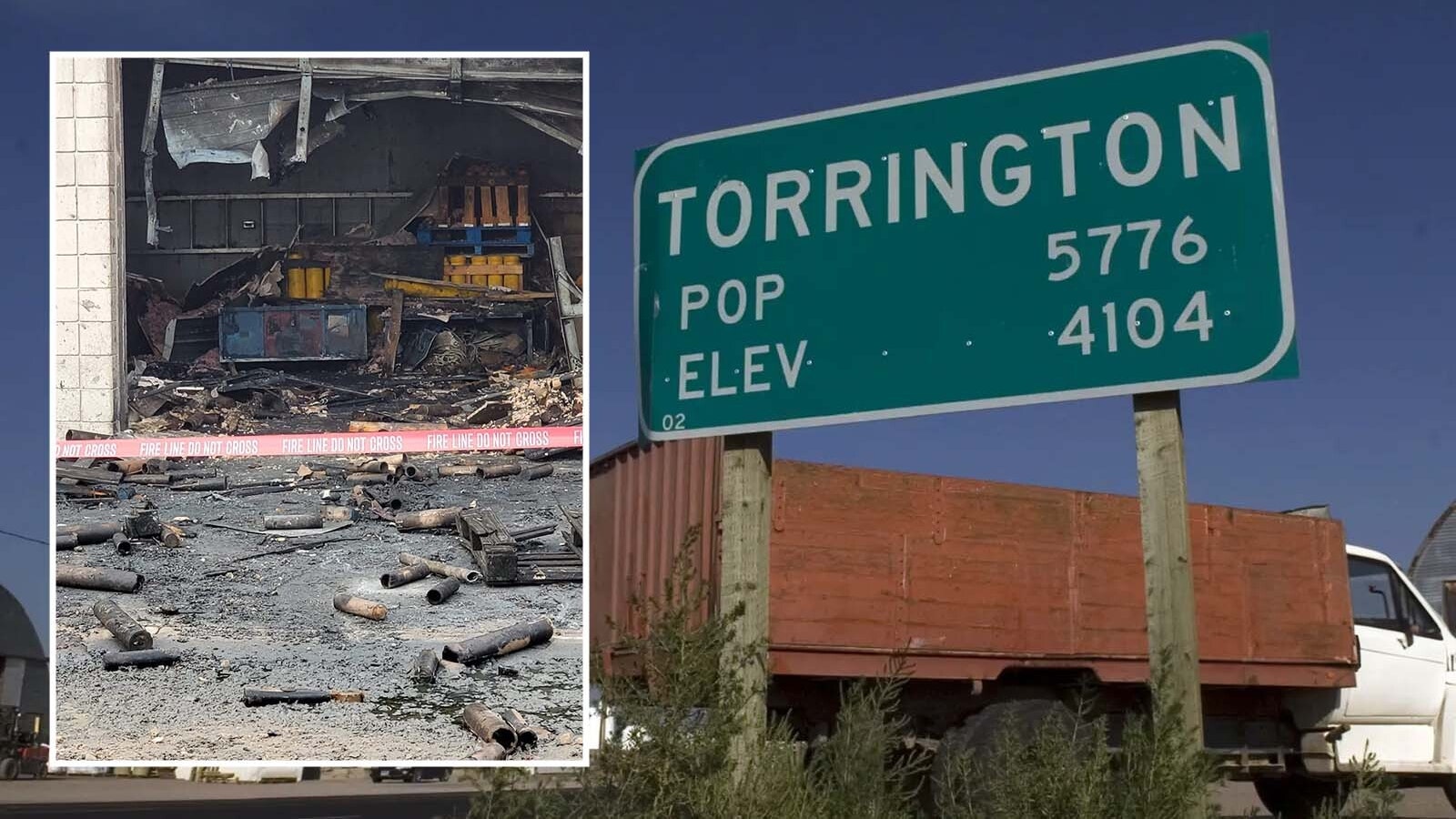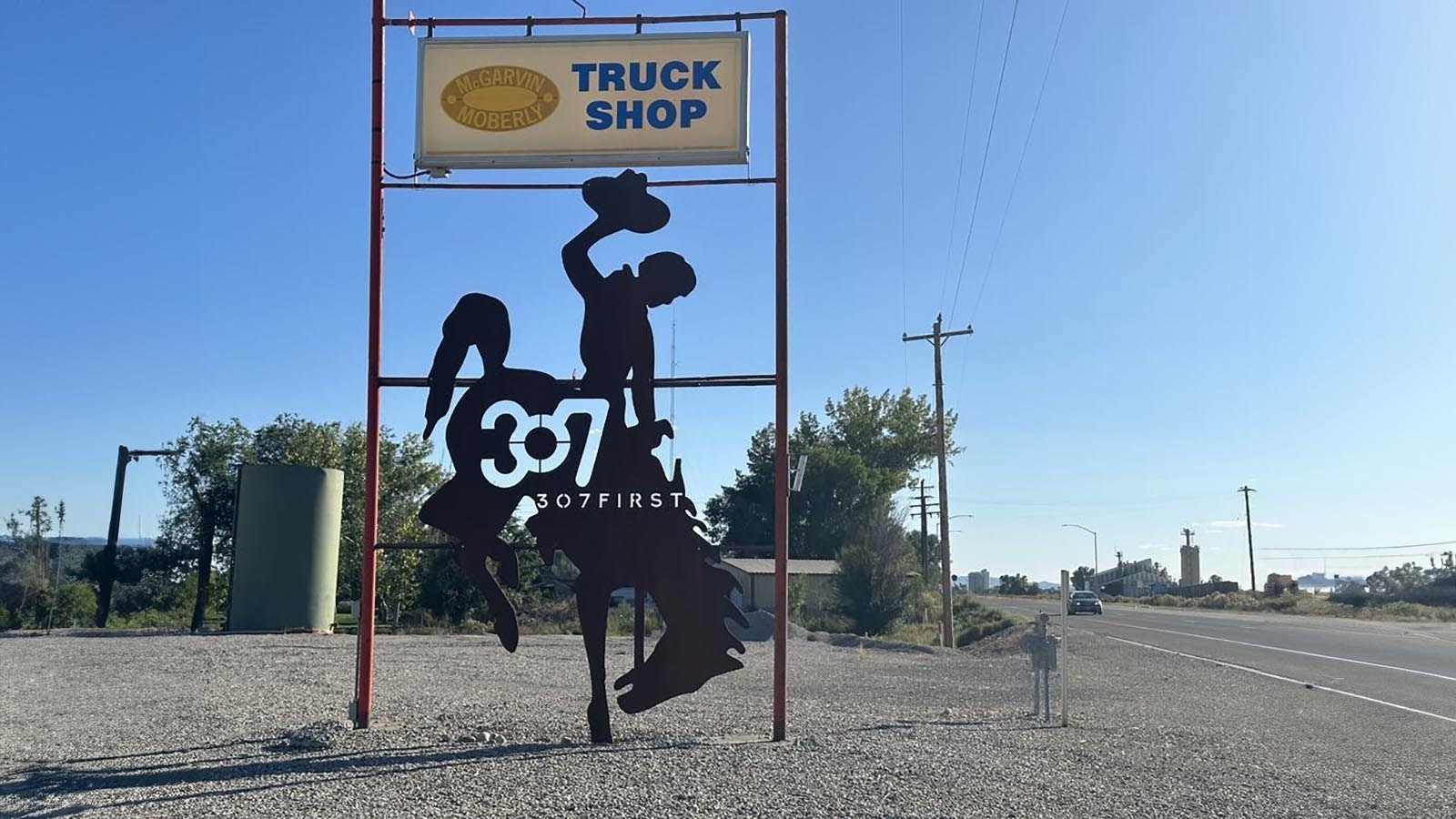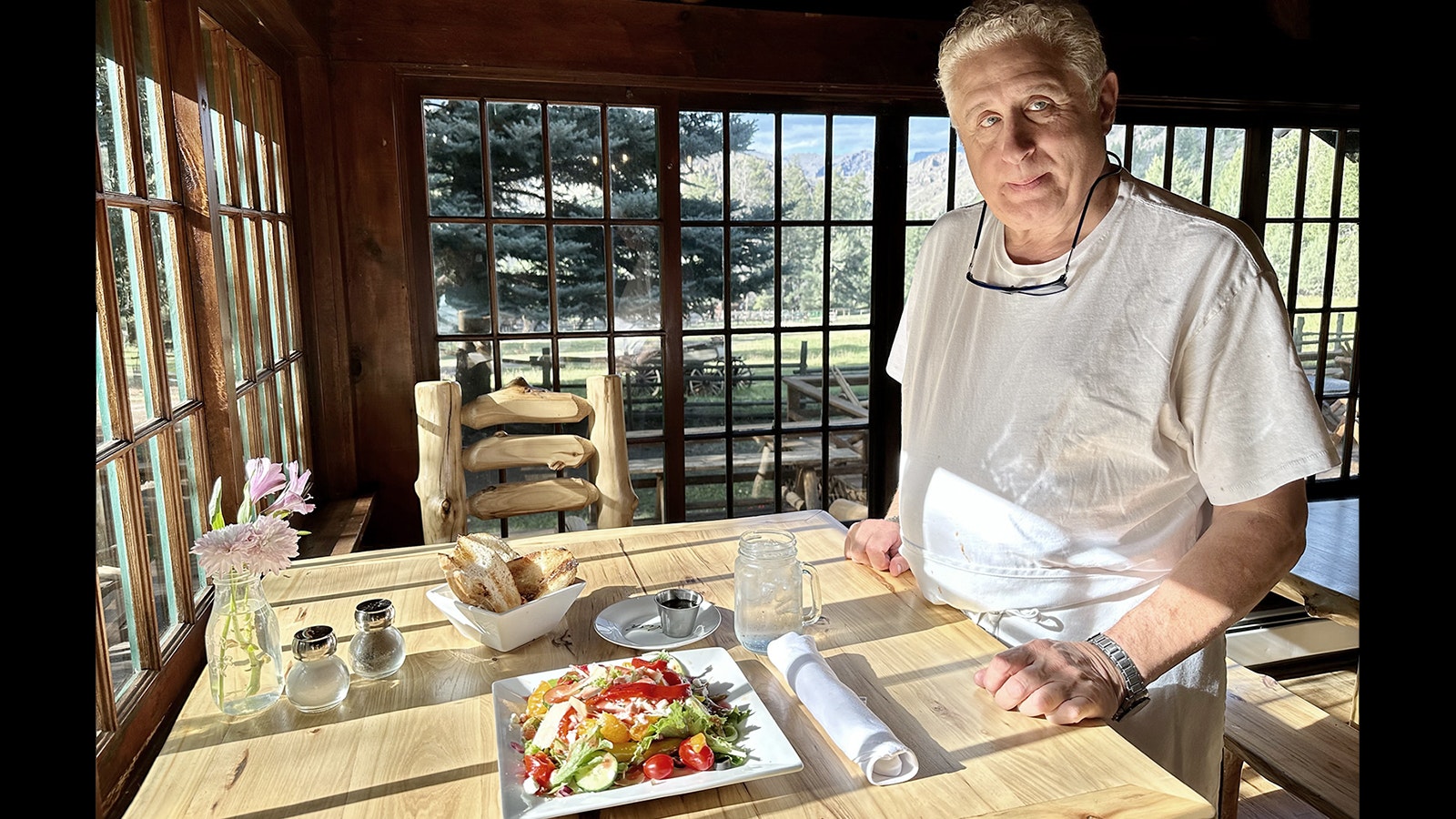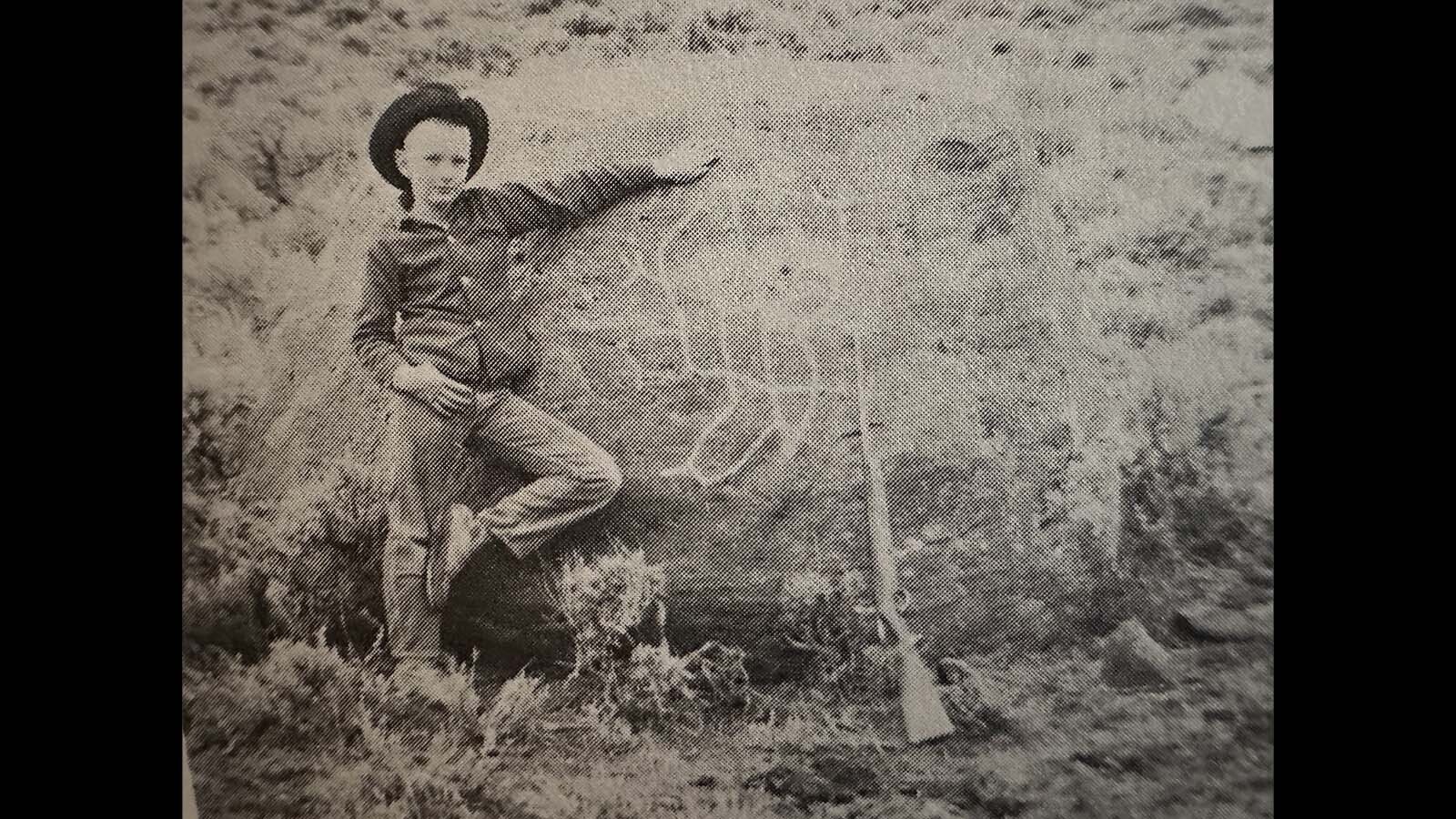By Leo Wolfson, State Political Reporter
Leo@Cowboystatedaily.com
It’s possible Louisa Swain didn’t grasp the significance that she was not only the first woman in Wyoming to cast a vote in 1870, but also the first woman in America with the same full political rights as men.
Mary Mountain, executive director of the Louisa Swain Foundation, said Swain walked up to the polls wearing a clean apron and carrying a small pail for yeast, which she planned to later bring to the bakeshop on her way home.
Swain’s historic vote in Laramie led to other national firsts for women in Wyoming, such as the first female bailiff, juror and governor.
The Swain Building
Swain’s legacy was honored during a dedication ceremony Thursday afternoon. A previously unnamed federal office building on 21st Street in downtown Cheyenne is now the Louisa Swain Federal Office Building.
It’s the first federal building in the Rocky Mountain region to be named for a woman.
“It will serve as a reminder of the strong leadership of women throughout our country’s history, and especially in Wyoming, and an encouragement that everyone can make an impact or be a catalyst for change,” said Leigh Ann Bunetta, regional counsel for the U.S. General Services Administration.
The event was hosted by U.S. Sen. Cynthia Lummis, R-Wyoming, who sponsored 2021 legislation for the designation.
“I think it’s fitting that this building be dedicated to honor Wyoming and its first woman voter,” Lummis said Thursday.

A Political Move
Lummis said Swain was chosen to cast the first vote because she was seen as an upstanding citizen of Laramie, and the townspeople “wanted someone from their community who was a gentle woman of stature and good graces.”
Although it’s admirable that Wyoming was the first to enact women’s suffrage in 1869, more than 50 years before the rest of the country, the action took place for many political reasons other than granting women’s rights. The reasons included giving the state more voting power, and it was an effort to bridge loyalty between women and the Democratic Party.
“In order to become a state, they had to include the women,” Mountain said. “And then they said, ‘How do we attract the women? Let’s give them their rights so they can be just like us.’
“But that’s still pretty remarkable in the day and age when they didn’t do that.”
The precedent was set and in 1890, when the Wyoming Territory applied for statehood, Wyoming delegates were quoted as saying in a telegram, “We will stay out of the Union a hundred years rather than come in without our women.”
Congress eventually relented and granted Wyoming its statehood that year, giving women the right to vote in the state a full 30 years before the rest followed suit with the passage of the 19th Amendment.
The Equality State
Wyoming went on to set an example for the Rocky Mountain region and earned the moniker “The Equality State” for giving women the right to vote.
“You can’t go to any other state that did this,” Mountain said. “That not only gave women these rights 50 years before, but they held onto them as they fought to become a state.”
Swain’s Legacy Bridges Partisan Divide
While Lummis was Wyoming’s state treasurer, she started working with the Downtown Laramie Business Association and other local Laramie leaders to recognize Swain.
What culminated in 2005 was the Wyoming Women’s History House, a Laramie facility honoring Wyoming’s 1869 Suffrage Act and all of the state’s groundbreaking firsts for women in America. There also is a plaza commemorating Swain in downtown Laramie.
Swain left Wyoming about a year after she voted at the age of 70 and died in Maryland, where she is buried in a Quaker cemetery.
When Lummis got to the U.S. Senate in 2020, she started working with two Democratic members of the Maryland delegation to further recognize Swain through federal legislation.
“The Senate was very acrimonious my first year there and it was hard to bridge the partisan divide,” Lummis said. “So, we began to look at legislation which allowed us to have conversations with Democrats that were easy to pass.”
Sen. John Barrasso, R-Wyoming, co-sponsored the legislation.

An Opportunity
Adam Stewart, a member of Lummis’ staff, was made aware that the federal building on 21st Street – which houses offices for the Department of Labor, U.S. Trustees, Federal Protection and U.S. Department of Agriculture – had never been officially named.
Even though this designation was not a controversial topic, Lummis said it was still harder than “pushing wet spaghetti uphill” to get the bill passed through the House and Senate, an effort she credited Stewart for helping with.
“Adam is the person who’s really most responsible for getting this bill passed,” Lummis said. “He bird-dogged it through the U.S. Senate and U.S. House.”
The Louisa Swain Building now is designated with a commemorative sign on the southeast corner of the building that was unveiled during Thursday’s ceremony. Also in attendance were a number of members from the Cheyenne League of Women Voters dressed in full 19th century suffragette garb.
Gov. Mark Gordon, Cheyenne Mayor Patrick Collins and state Rep. Cathy Connolly, D-Laramie, were at the ceremony.
“It’s a great honor obviously for the state,” Gordon said, “and a reminder we need to start to live up to what equality means.”
Connolly also said the state still has work to do to achieve equality.
“We have a lot more work to do,” Connolly said. “And we have inspirational women to follow. It wasn’t just Louisa Swain. There was a whole line of women in Wyoming who were the first in the world to hold important positions that we can follow.”





